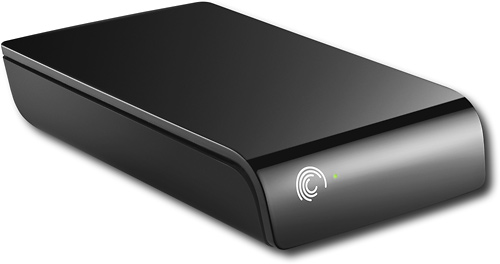Tune Up: Data Storage
posted in: Features • Reviews & Playlists
 Just like any other possession, media files on your computer need a place to be stored. Data storage is a very evolving field within the computer industry, and it is particularly pertinent to music technology for obvious reasons.
Just like any other possession, media files on your computer need a place to be stored. Data storage is a very evolving field within the computer industry, and it is particularly pertinent to music technology for obvious reasons.
To record music, a complex set of interlocking files and programs all work together to create your final product. Sure, you need to store the final MP3 or WAVE file, but what about everything else? When recording, you work from a small file in you DAW (often called the project file”) that must be stored because it doesn’t have any inherent audio within. The file is simply a template reading raw audio files from elsewhere on your computer, and manipulating them as you specify in the program (volume, automation, effects, sequence, etc.).
Staying Organized
 There can often be a mess of files associated with one mix including all the vocal takes, guitar takes, drum takes, any plug-in/application files, MIDI files and even the project file itself. However, many DAWs automatically create folders to store all these files along with the project file, the source audio and even a location for bounces. We highly recommend utilizing these folders. That way you know where all of your source audio is at all times (and you can even keep track of the different mixes you create ye sending them to the bounce folder). Another perk with this is the ability to move a project folder rather than all of the files separately. This way, you can easily transfer mixes/projects to other computers.
There can often be a mess of files associated with one mix including all the vocal takes, guitar takes, drum takes, any plug-in/application files, MIDI files and even the project file itself. However, many DAWs automatically create folders to store all these files along with the project file, the source audio and even a location for bounces. We highly recommend utilizing these folders. That way you know where all of your source audio is at all times (and you can even keep track of the different mixes you create ye sending them to the bounce folder). Another perk with this is the ability to move a project folder rather than all of the files separately. This way, you can easily transfer mixes/projects to other computers.
Where/How To Store
Not only might you have a huge collection of projects you’re working on and fully mastered tracks, but you may also have huge collections of loop libraries and sound effects collections. A music enthusiast (rather than creator), may also have an expansive library of MP3’s. We recommend keeping at least one reliable external for storage. While projects work best when run off the computer itself, storing everything on the same computer can make it run slower and is often quite risky. So, keep your libraries on an external hard drive and make a second backup of that hard drive. Beyond this, make sure you also keep a backup of your current computer so if a crash happens, you won’t lose all those files.

This is a lot of data to store. As far as externals go, there are specs you should look for. Basically, there are two standard means of connection: USB and Firewire. The difference here is similar to our previous discussion about the speed of these cables. While they have comparable transfer rates, tests indicate that Firewire performs better when transferring large volumes of data (really important when working with audio). What about size? Well the 500GB-1TB range of hard drives are quite affordable now, often coming in under $100. Also keep in mind whether they are bus powered (powered through their connection), or need power from an external AC adapter. Finally, physical size can be a consideration. Often the larger hard drives with bigger capacities and faster transfer rates are desktop models. These are best for reliable home backup drives. However, if you’d like to take your libraries of sound with you, we’d recommend a more portable model. Also, keep in mind that an affordable way to acquire an external is to purchase an internal hard drive (often much cheaper than externals) and an enclosure then build it yourself. Follow factory instructions that come with enclosures to make sure it’s done correctly.
At the end of the day, it’s tough for us to recommend a brand or type as there are so many out there. Keep your needs (size, portability, etc.) in mind as well as their applications. Always look out for sales and deals, because a great external hard drive at a great price is always a good addition to your home studio or personal computer setup.
